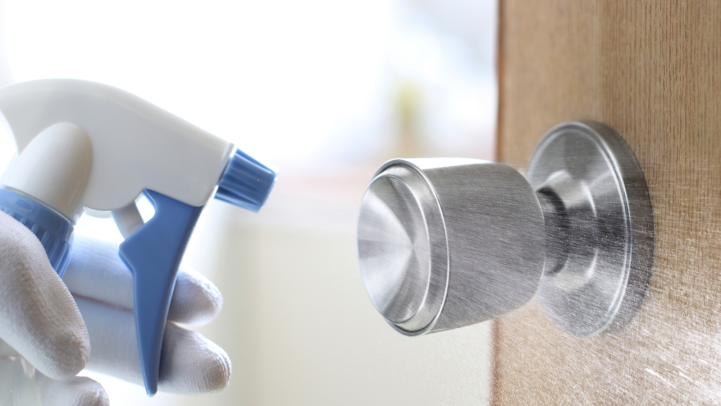
The use of cleaning products, disinfectants and their chemistries contribute to public health in homes, schools, healthcare settings and communities every single day. But consumers might not understand this after reading some of the commentaries in news coverage of a review article summarizing previous research on a key chemistry used in many cleaning products and disinfectants.
The news coverage and related headlines – some of which were a bit alarmist – involved a commonly used family of chemicals known as quaternary ammonium compounds (quats or QACs for short).
Quats can be found in commercial and retail products such as cleaning products, disinfectant wipes, disinfectant sprays and liquids, laundry disinfectants and sanitizers and certain antiseptic products for hand care (e.g., antibacterial soaps and some hand sanitizers).
Quats are the active ingredient in these trusted products used in many household, commercial, medical, food service, food and beverage processing and institutional sites. There are a variety of quats in sanitizing and disinfecting products.
Cleaning product and disinfectant manufacturers and regulatory authorities are regularly reviewing scientific articles examining the use and potential effects of these products and chemistries to ensure they remain safe and effective and provide the benefits we all require. Claims made by the review’s authors that disinfection products have not undergone thorough regulatory assessments for human and environmental reviews are simply false.
ACI member company manufacturers make product safety a top priority. Rigorous safety tests are in place for human health that are evaluated by U.S. Environmental Protection Agency for approval and compliance with all regulatory guidelines.
Regular cleaning products do a good job of removing soil and dirt. But cleaning alone does not kill germs.
When disinfecting surfaces and objects, you are breaking the chain of transmission from surfaces by destroying the germs that cause infections and disease, including bacteria, viruses (such as COVID-19 and the flu), and fungi.
Disinfecting products are safe and effective when used as directed. Importantly, these products as well as all cleaning products must always be used as directed.
Speculative recommendations
Some of the recommendations provided by experts in news coverage of the review article are very concerning and speculative in nature. One extremely misleading claim in a publicity statement claims that “Disinfection with QACs, for example, often has no benefit over cleaning with plain soap and water.”
Soap is not a disinfectant. Soap “gets rid” of germs by dislodging them so that water can wash some of them away; however, germs frequently remain after soap use and the mechanical action of washing. The use of soap alone is not approved by the Environmental Protection Agency (EPA) to make a disinfecting claim. The recommendation to use soap and water instead of a disinfectant is troubling as it does not provide a balanced approach.
Disinfecting is especially critical when someone in the home is sick or immunocompromised. Disinfection is mission critical in healthcare settings and is a routine part of their infection control programs to limit the spread of disease where there are many vulnerable individuals.
Concerning, irresponsible statements
One of the more concerning statements comes from a Northwestern University press release quoting one of the review paper’s co-authors who claims…
“It’s ironic that the chemicals we’re deploying in vain for one health crisis are actually fueling another. Antimicrobial resistance was already contributing to millions of deaths per year before the pandemic. Overzealous disinfection, especially with products containing QACs, threaten to make it worse.”
It is very irresponsible when “experts” use their authority to speculate and hypothesize statistics like this without providing a citation and appropriate context. To allege that use of disinfectants caused millions of deaths due to antimicrobial resistance is completely unsubstantiated. Antibiotic resistance is very different from antimicrobial resistance.
It is the responsible formulation of chemistries used in disinfecting products and the proper and appropriate use of these products that contribute to public health and safety.
For more informed perspective on the disinfectants and their chemistries, visit https://www.cleaninginstitute.org/understanding-products/disinfecting-and-disinfectants.